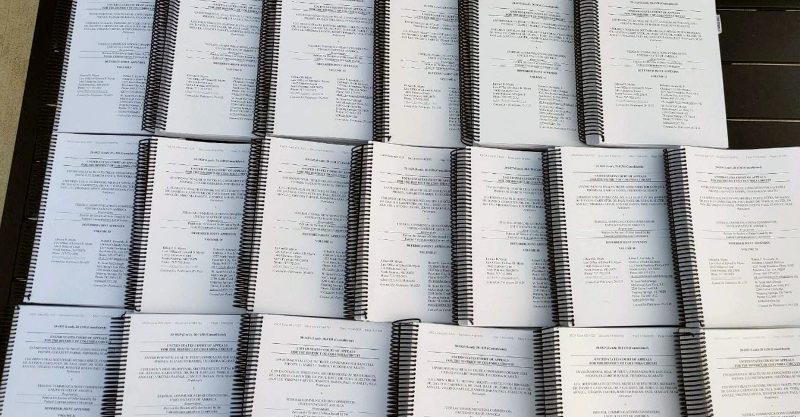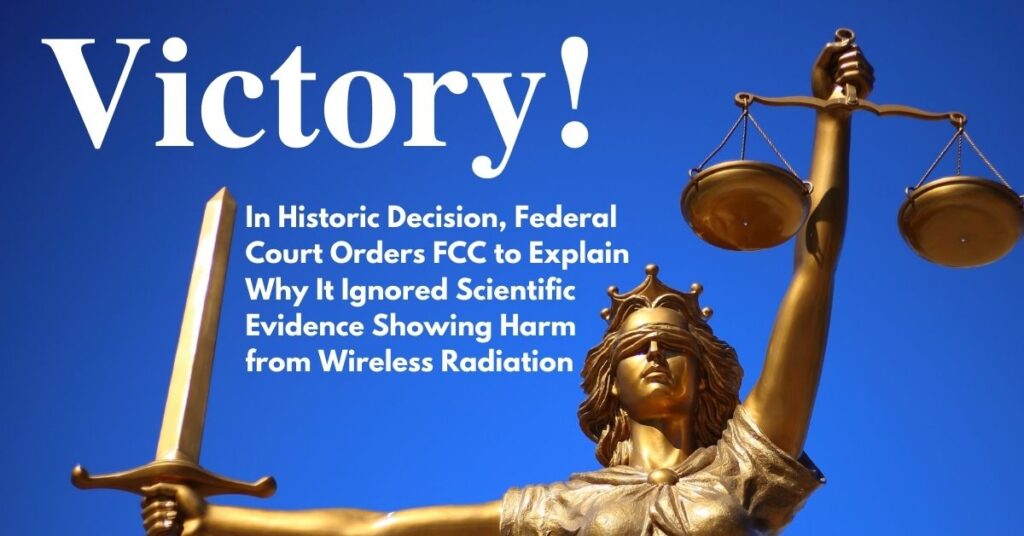August 13th 2021, EHT et al. vs FCC: ruling. Federal court orders FCC to explain why it ignored scientific evidence showing harm from wireless radiation
The court ruled that the FCC failed to consider the non thermal, non-cancer evidence regarding adverse health effects of wireless technology when it decided that its 1996 radiofrequency emission guidelines protect the public’s health. The Court ruled: “The case be remanded to the commission to provide a reasoned explanation for its determination that its guidelines adequately protect against harmful effects of exposure to radiofrequency radiation…”
The fact that the FCC floundered so blatantly when asked in January to justify their position, and have now lost this appeal shows just how untenable their position is. In the US we see that Telecoms cannot be trusted to self-regulate, with the FCC turning a blind-eye to non-thermal harm, injury and nuisance.
In the EU/UK the argument is that Telecoms regulation has to function in accordance with the recitals/articles of the EECC2018 which was adopted into UK law post Brexit, for example recital 110 requires Public Health to be made imperative, and risk assessed not solely against the ICNIRP position. We have seen how Telecoms here in the UK also cannot be trusted to self-regulate, with Ofcom even turning a blind-eye to breaches of the ICNIRP exclusion zones.
January 25 2021, EHT et al. vs FCC, was heard in the U.S. Court of Appeals for the District of Columbia.
Massive scientific evidence ignored by FCC: The case challenges the FCC’s refusal to review its 25-year-old obsolete wireless “health guidelines” and to adopt scientific, biologically based radio frequency emissions rules that adequately protect public health from wireless devices and infrastructure.
11,000pp and 1000 peer reviewed studies, and exhibits, were presented as evidence for known biological effects occurring at levels as low as 0.05 V/m. (ICNIRP after FCC 56 v/m). Here is a link to the 27 volumes of evidence:
https://ehtrust.org/the-massive-scientific-evidence-ignored-by-the-fcc/
https://childrenshealthdefense.org/defender/landmark-5g-case-against-fcc-hearing-set-jan-25/
Judge Millet said to the FCC attorney: “How was it reasonable for the FCC to rely so heavily on a response from the FDA that … did not address the very things you asked for information on: other devices, the use of multiple devices and physical harms other than cancer?”
The judges asked excellent questions and showed in-depth knowledge of the case. The honourable Judge Henderson, a chemical engineer by training, told the FCC: “I am inclined to rule against you,” which is a rare and strong statement from a judge.
“I hear all the time from people whose lives are devastated, and they don’t know what to do, they don’t know where to go, and they need help. Some are driven to suicide. And as a society we owe them an answer.”
Scott McCullough, attorney for the Children’s Health Defense (CHD)


McCullough presented the arguments on behalf of the CHD, the Environmental Health Trust (EHT), Consumers for Safe Cell Phones, and other petitioners… tremendous amounts of scientific and human evidence of physical harm caused by radiation emitted from wireless technology such as Wi-Fi and cell towers, was submitted to the FCC in 1,700 filings.
The filings contain peer-reviewed studies that show radiofrequency (RF) radiation contributes to cell damage, DNA damage, infertility, carcinogenicity, cognitive deficits, and cardiovascular disruption, among a wide array of negative health effects.’
If you listen to the hearing you can understand how any reliance on FCC guidelines for protection from the cumulative exposures from multiple localised wireless devices of fixed and non fixed source cannot, and should not, be relied upon. The indirect non-thermal effects and biological responses are not accounted for and the FCC have by their own admission not looked at the evidence.
Their guidance which informs the ICNIRP and PHE guidelines should not be followed whilst many legal challenges are being filed and heard favourably, and whilst there is credible substantiated evidence of harm – this is a basic tenet of the Precautionary Principle.
